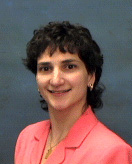Sentinel Lymph Node Biopsy
When a woman is diagnosed with breast cancer, it is very important to assess whether the cancer has spread to the lymph nodes for the purpose of staging, prognosis, and treatment. The traditional standard of care has been to perform an axillary lymph node dissection, which consists of removal of a pocket of lymph nodes from the axilla (arm pit). The number of lymph nodes removed typically ranges from 10 to 20. There are however, long and short term risks/consequences associated with complete axillary lymph node dissection such as numbness in the armpit or the inner arm, decreased range of motion to the upper extremity, and chronic lymphedema which occurs in approximately 10% of women ten years after the surgical procedure.
"Specializing in Benign & Malignant Diseases of the Breast"
A new technique is now becoming the standard of care--the sentinel lymph node biopsy. The sentinel lymph node is the primary route of cancer spread along the chain of other lymph nodes; therefore, if the sentinel lymph is negative for cancer then the chance of cancer having spread to other lymph nodes in the armpit is very low (less than 5%). In addition, sentinel lymph node biopsy has been shown to increase the sensitivity of cancer detection in the lymph node by 15%. The technique involves injecting the tumor site approximately 1.5-hrs prior to surgery with a radioactive chemical which is picked up by the lymph nodes. A blue dye is also injected to the same area five minutes prior to surgery and the breast tissue is massaged. During the operation, the "hot" lymph node(s) (containing the radioactivity material), and the "blue" node(s) (containing the blue dye) are removed. One to four lymph nodes on average are removed. The pathologist carefully analyzes the removed lymph node(s). If it is negative for carcinoma, no further node dissection is required. If it is positive for carcinoma then, and only then, is a complete axillary lymph node dissection recommended. Sentinel lymph node biopsy thus offers women a less invasive step process and a better prognostic indicator.
Based on the criteria endorsed by the American Society of Breast Surgeons, only a few breast surgeons are qualified to perform sentinel lymph node mapping. Surgeons must perform 20 simultaneous sentinel lymph node biopsies and complete lymph node dissections with a false negative rate of less than 5%, and a success rate of 95% or greater. The breast surgeons at the Advanced Breast Center of Advanced Surgical Associates are qualified to perform sentinel lymph node mapping.
If you have any questions regarding breast disease please call!
We'll gladly answer all your questions and steer you in the right direction.

